FORESTS OF HOPE
Jane Goodall: ‘I had to give up what I love best’ at Gombe to inspire biodiversity conservation
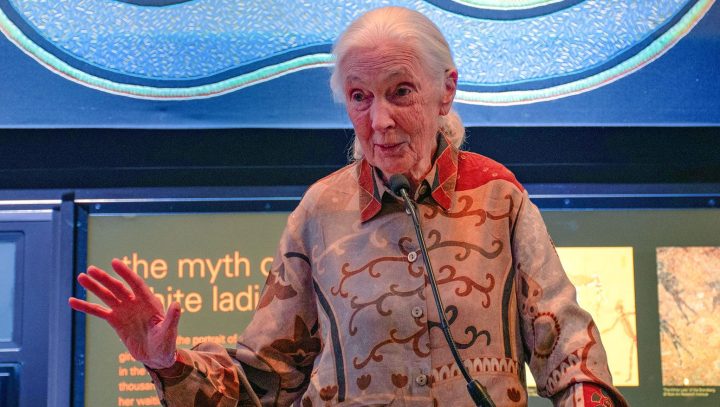
Conservationist Jane Goodall gave up living with her chimps in the forest in the Gombe National Park in Tanzania to raise awareness of animal conservation, biodiversity loss and climate change.
At almost 90 years old, Dr Jane Goodall, the world-renowned ethologist and conservationist, spends 300 days of her year travelling around the world, speaking to people about the urgency of animal conservation, biodiversity loss and climate change.
But despite being a Dame of the British Empire and UN Messenger of Peace, her fondest memories stem from her time in the Gombe National Park in Tanzania, learning about humans’ closest living relative, the chimpanzee.
“I had to give up what I love best to try to save it. It’s just one of those things,” said Goodall, chuckling.
Goodall was speaking to Daily Maverick a few days into her South Africa trip, where she had already made appearances at events at Wits University, the JSE and at the Jane Goodall Institute’s youth programme, trying to inspire those around her that there is still reason for hope.
Following a panel discussion with local researchers at the Origins Centre at Wits on Wednesday night, Goodall said: “Those were the best days of my life – being out in the forest, learning about the interconnection of all the species of plants and animals in the forest ecosystem.”
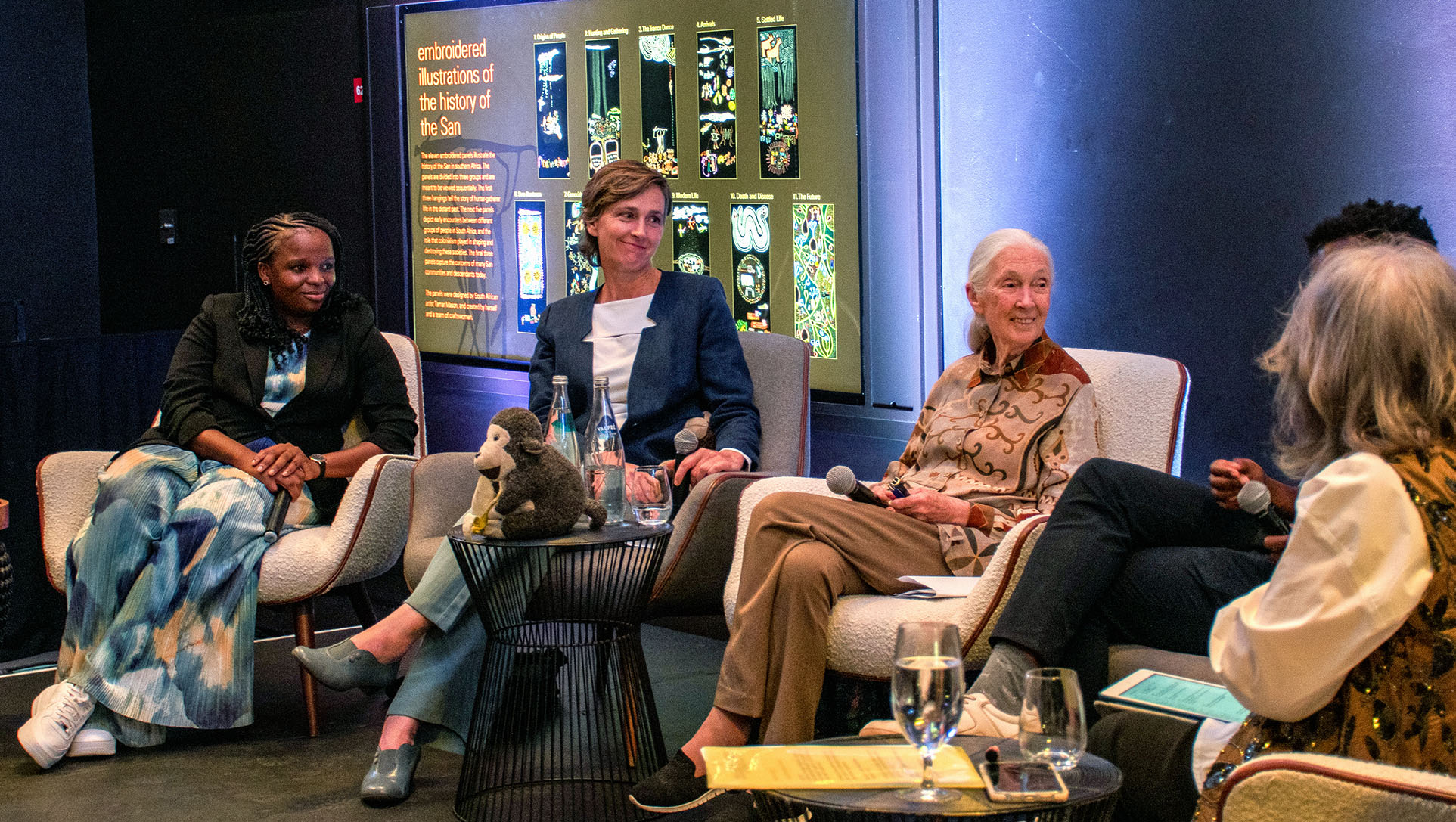
Local researchers discuss sustainable development in Africa with ethologist Dr Jane Goodall at the Origins Centre, Wits University, on 21 February 2024. (Photo: Julia Evans)
Goodall said the reason she left was because she learnt about the true extent of deforestation in chimpanzee habitats across Africa at a conference in 1986.
“I went to that conference as a scientist, planning to spend the rest of my life probably studying chimpanzees in different areas, but I left as an activist,” said Goodall at the event, which was in partnership with Oppenheimer Generations Research & Conservation and the Future Ecosystems for Africa programme.
Securing funding from National Geographic, Goodall then visited all six chimpanzee study sites in Africa, discovering not only the challenges faced by chimps but also the hardships of human communities surrounding their habitats.
“I visited the different chimpanzee sites to learn more about why chimpanzee numbers were dropping,” said Goodall, explaining that she learnt about the bushmeat trade, the shooting of mothers to take infants to sell in the live animal trade and snares set by hunters.
“But I also learned a lot about the problems faced by so many of the human people living in and around chimpanzee habitat – the crippling poverty, the lack of good health and education facilities, the degradation of the land.”
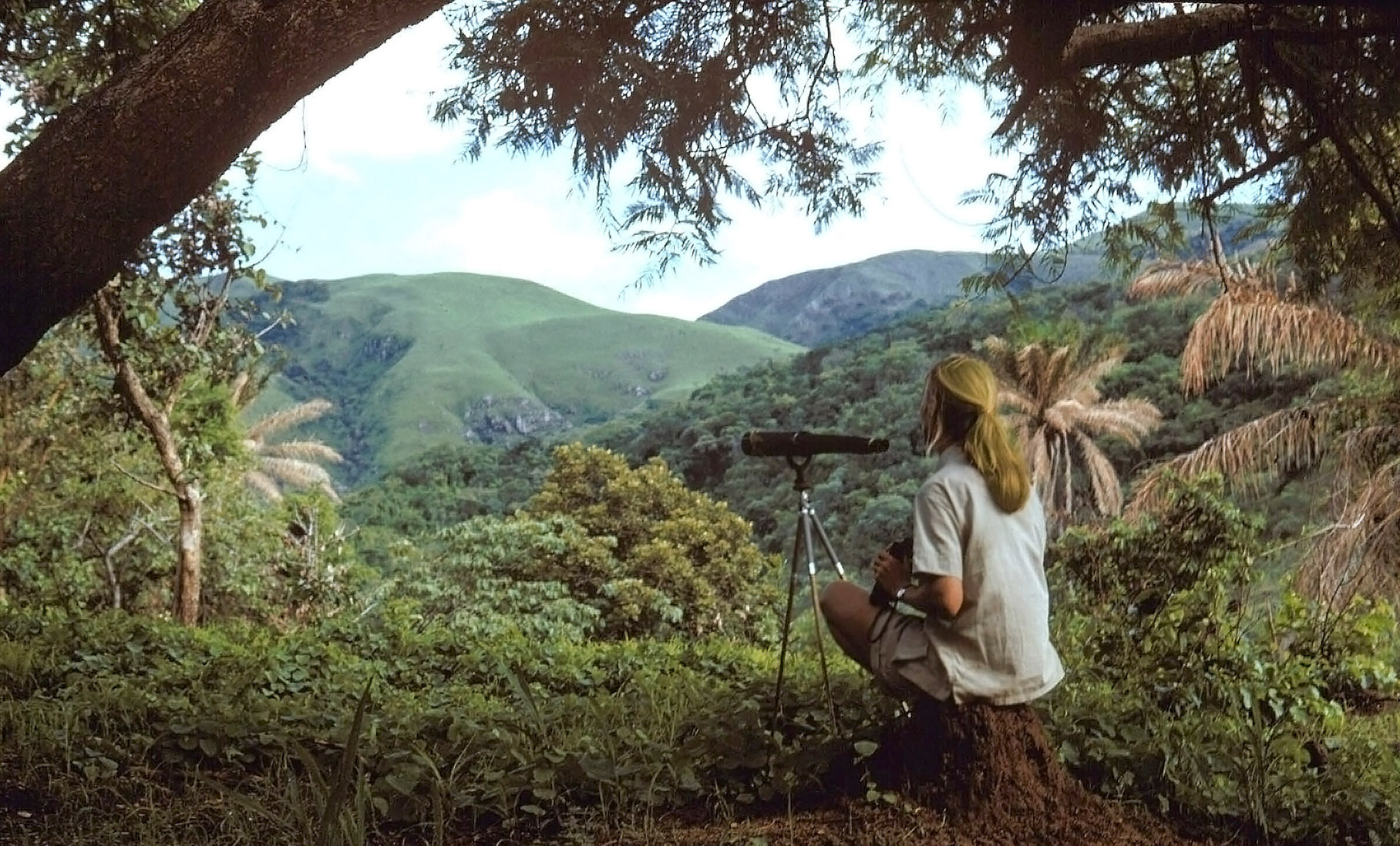
In her early days at Gombe, Jane Goodall spent many hours sitting on a high peak with binoculars or a telescope, searching the forest below for chimpanzees. (Photo: JGI / Jane Goodall)
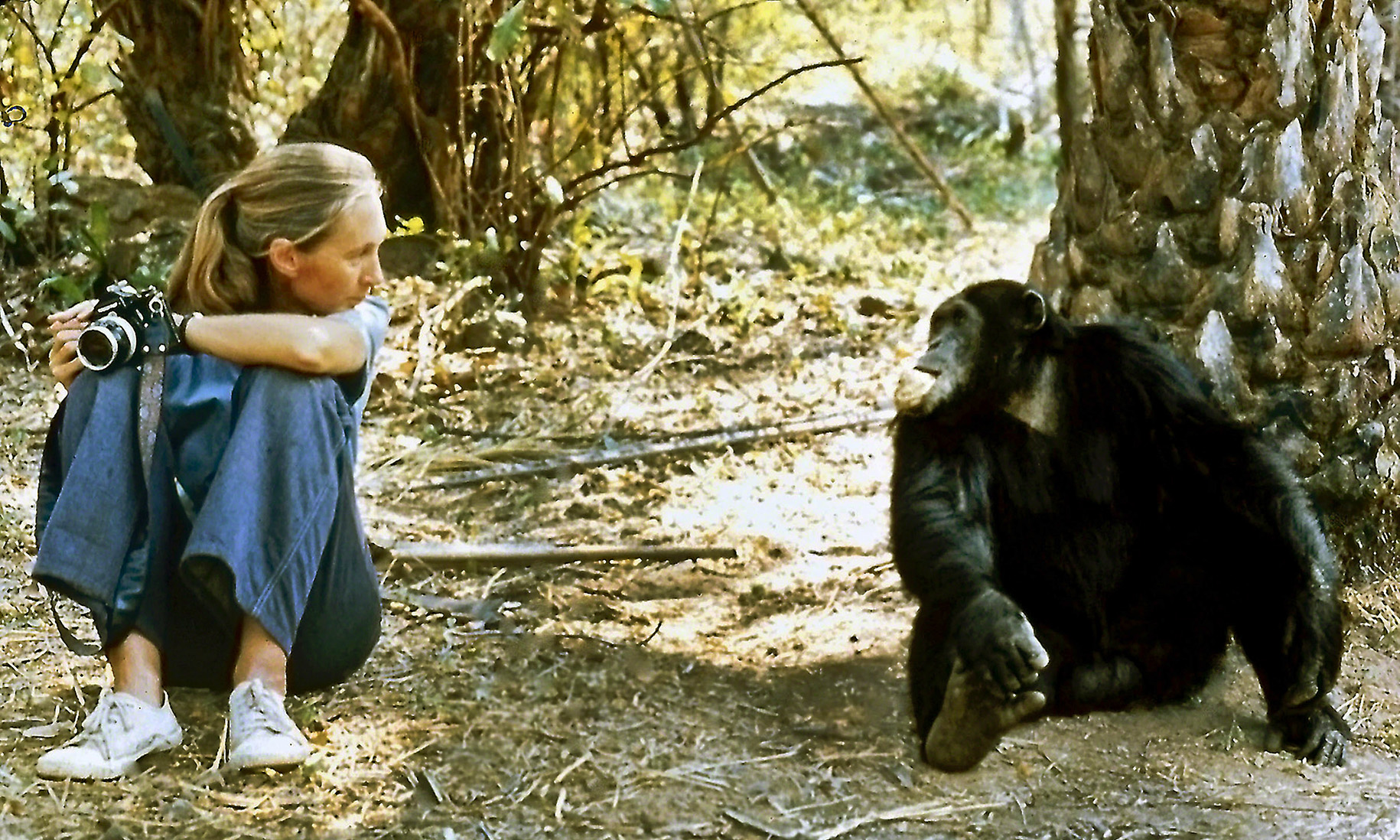
Dr Jane Goodall with alpha male Figan at Gombe National Park in Tanzania (Photo: JGI / Derek Bryceson)
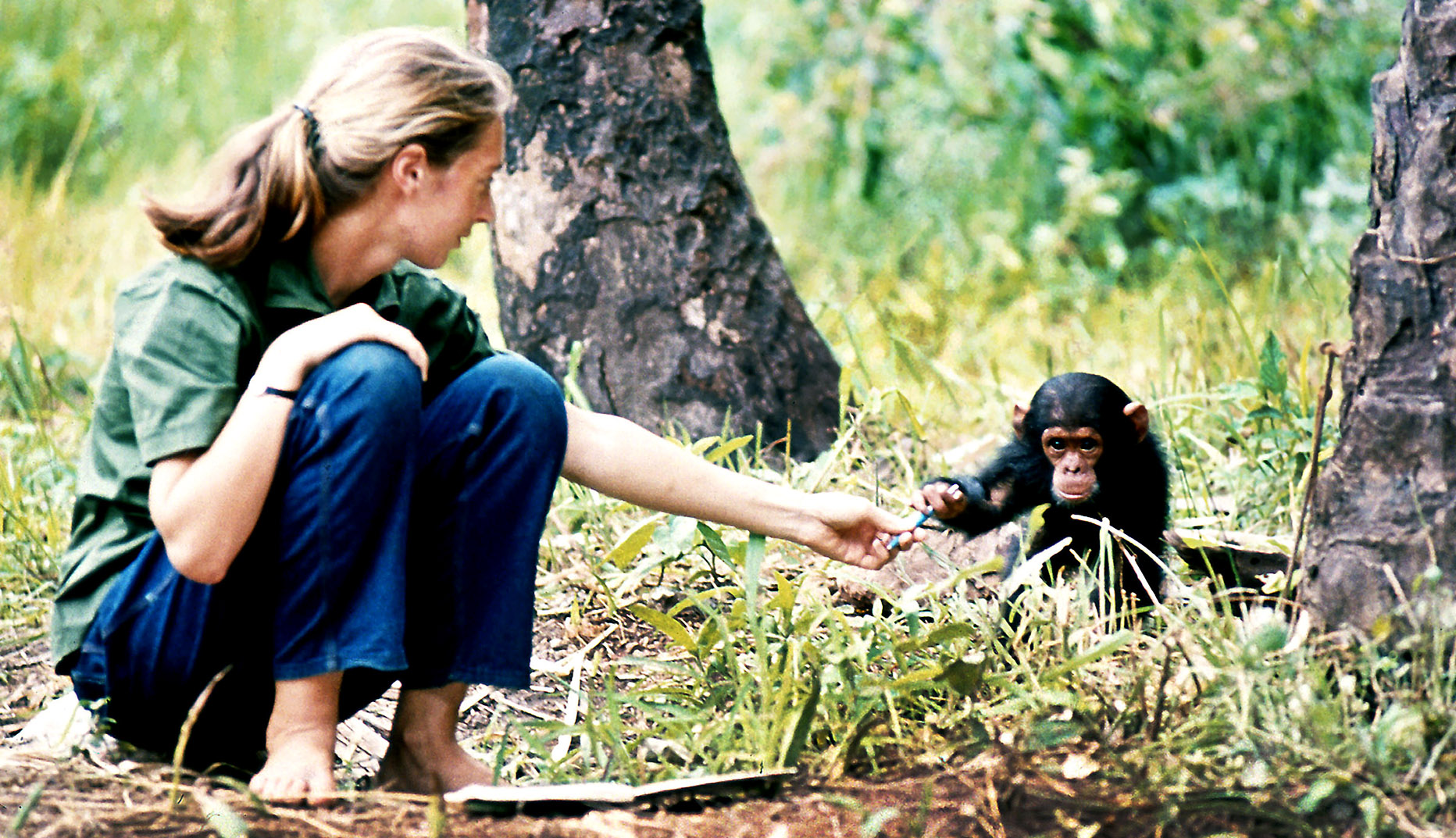
Young researcher Jane Goodall with baby chimpanzee Flint at the Gombe Stream Research Centre in Tanzania. (Photo: JGI / Hugo van Lawick)
Community-led approach
Goodall established the Jane Goodall Institute (JGI) in 1977, a conservation organisation that uses a community-led approach, encouraging local communities to own the process of sustainable development and conservation.
Goodall realised early on the importance of not solely framing conservation around wildlife to locals, but showcasing how conservation can be beneficial for communities dependent on nature.
She said that from the very beginning, they went into villages, selected a group of seven local Tanzanians, who went and asked their community what they needed to make their lives better.
People have now become our partners in conservation. Before they resented people coming in like us. Now, they know that saving the environment isn’t just for wildlife. It’s for their own future.
“They wanted to grow their own food, and for better education, especially for their children,” said Goodall, “and so that’s where we began.
“And gradually the people came to trust us… they came to see that, unlike other scientists who came, did their study and left, we stayed. We helped them try to get money so that we could introduce other things into the programme.”
Since then the JGI has helped to improve health and education in all 12 villages around Gombe and has 25 offices worldwide.
Projects that help communities increase their income and rely less on the forest include community-managed micro-credit programmes, beekeeping and woodlot cultivation.
Read more in Daily Maverick: How science and intuition can work together to save species
The latest thing the JGI has introduced is GIS mapping and satellite imagery, where volunteers from the different villages monitor the health of their forests.
“They’re very proud of that village forest reserves – they were destroying them, but now they’re saving them,” said Goodalll.
“People have now become our partners in conservation. Before they resented people coming in like us. Now, they know that saving the environment isn’t just for wildlife. It’s for their own future.”

Phoebe Samwell, JGI community development officer, talks with a group of JGI TACARE micro-credit beneficiaries in Kigoma, Tanzania. (Photo: JGI / Shawn Sweeney)
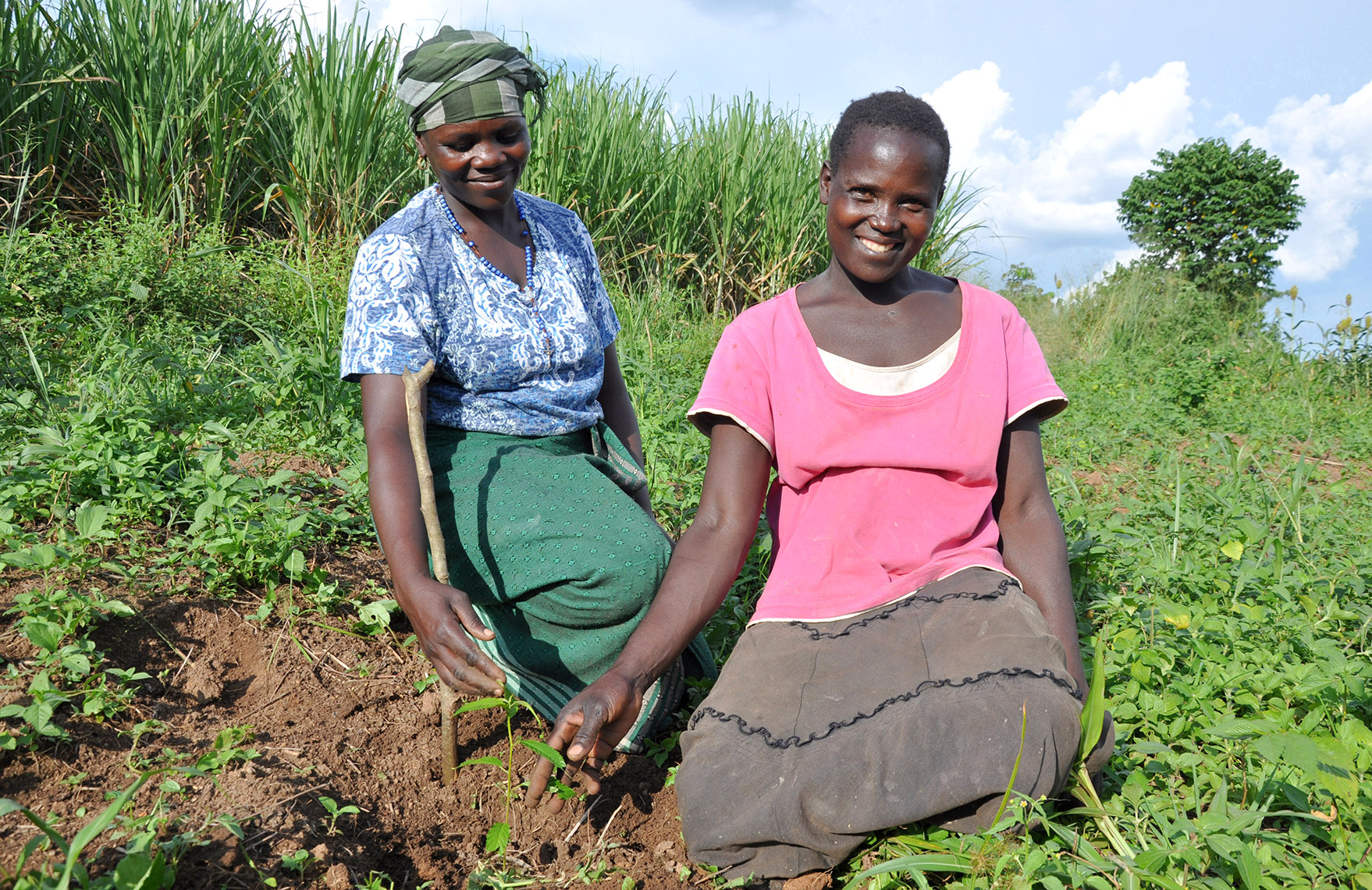
Watershed restoration project beneficiaries involved in riverline planting in Masindi district, Uganda. (Photo: JGI Uganda / Brenda Mirembe)
Inspiring hope
Goodall says she is concerned by the many issues the world faces – from the climate crisis and biodiversity loss, to the wars raging in Ukraine and Palestine and the dozen conflicts in Africa.
But for her, it’s all about hope.
Goodall said that how she got into this space has become a reason to inspire other people that they can make a change.
“I was told at school that there was no way I could go to Africa and live with wild animals – I didn’t have money, I was just a girl, and Africa was far away.
“But my mother said: ‘No, if you really want to do something like this, you’re going to have to work really hard, take advantage of every opportunity, and if you don’t give up, hopefully, you’ll find a way.’
Read more in Daily Maverick: Jane Goodall joins Barbie’s ‘inspiring women’ series: the strange evolution of an iconic doll
“And I’ve taken that message around the world and shared it particularly with young people in poorer communities. And the number of them who said, ‘Jane, you taught me because you did it, I can do it, too’.”
When Goodall was 23 she had saved up enough from a few jobs that she was able to board a ship to Kenya.

Dr Jane Goodall scans the treetops for chimpanzees in Gombe National Park on 14 July 2010, the 50th anniversary of her arrival at Gombe. (Photo: JGI / Chase Pickering)
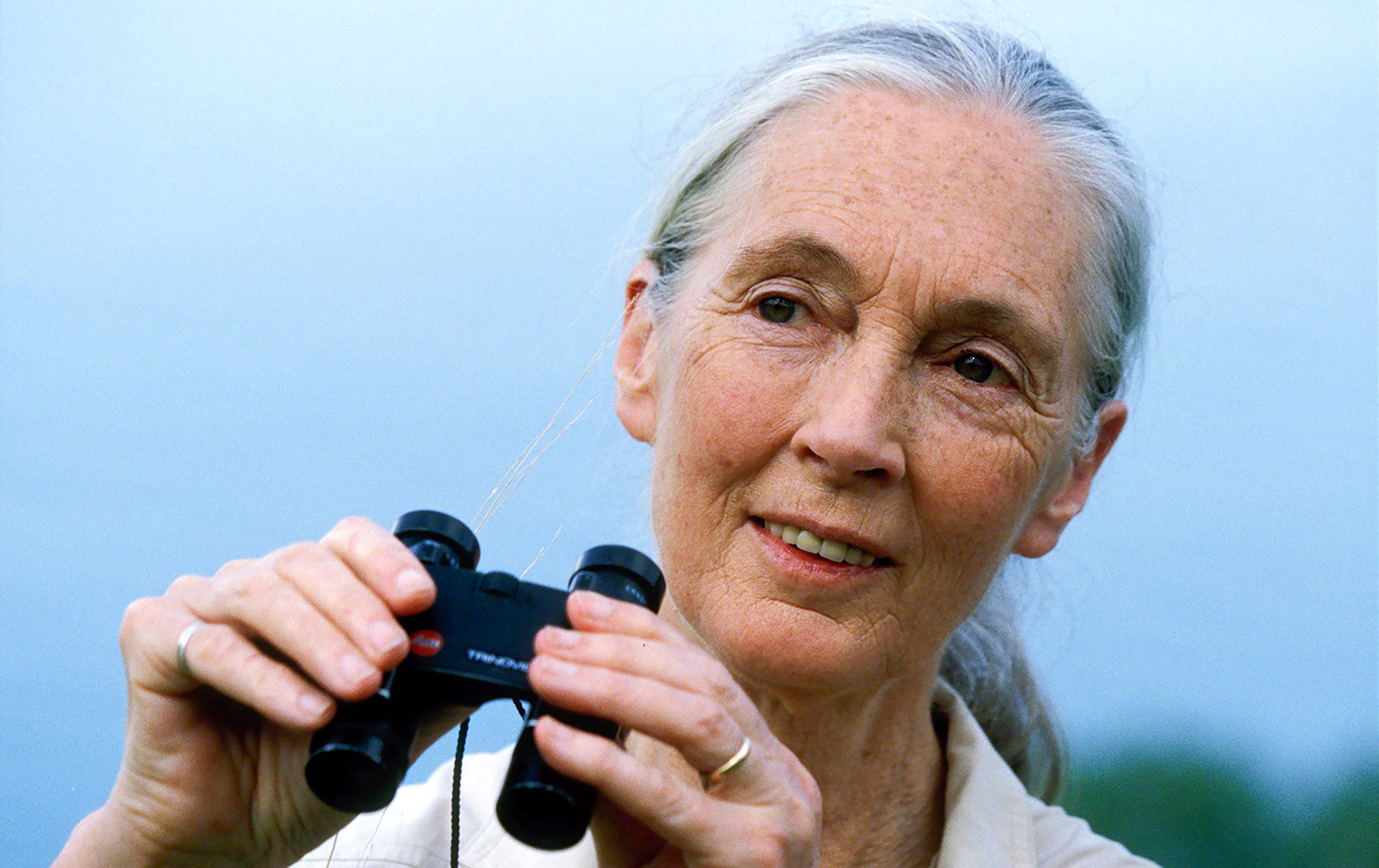
Dr Jane Goodall is a Dame of the British Empire and UN Messenger of Peace. (Photo: JGI / Bill Wallauer)
There she met paleoanthropologist Dr Louis Leakey, who eventually gave her the opportunity to go to the Gombe National Park to study wild chimpanzees.
After two years learning from the chimps, Goodall made groundbreaking discoveries that chimps use and make their own tools and have personalities and cultures. But as a young woman with no formal academic training, no one took her seriously.
So Leakey told her she had to complete her PhD in ethology at Cambridge University.
I’m an obstinate creature by nature, and I’m not going to give up.
“So, there I was arriving in Cambridge, never having been to college… and can you imagine how I felt when all these scientists told me that I had done everything wrong? ‘Jane, you shouldn’t have given the chimps names, you shouldn’t have talked about them having personalities, minds capable of problem solving, and certainly not emotions, happiness, sadness, fear, despair. Those are unique to us.’”
Goodall said that is what science believed in 1962, “but fortunately, I had a wonderful teacher when I was a child. And that teacher taught me that in this respect, these professors are completely totally, utterly wrong. That teacher was my dog, Rusty.”
Read more in Daily Maverick: Horrific cruelty – legal trade and lack of protection are decimating South Africa’s primates
Goodall explained that if you share your life in a meaningful way with any animal – be it a dog, cat, horse or pig – it would be clear to you, as it was to her then, that we are not the only beings with personalities, minds and emotions.
And now, Goodall uses that same indomitable spirit to try to inspire hope in young people, who she began noticing were angry, upset and depressed when she travelled the world.
“I said to them, yes, you’re right, we have harmed your future,” said Goodall, “but it’s not true that there’s nothing that can be done about it.”
Goodall went on to set up the JGI youth programme Roots & Shoots in 1991, which empowers young people by getting them involved in projects that protect the environment, wildlife or their communities. The programme is now in more than 65 countries worldwide.
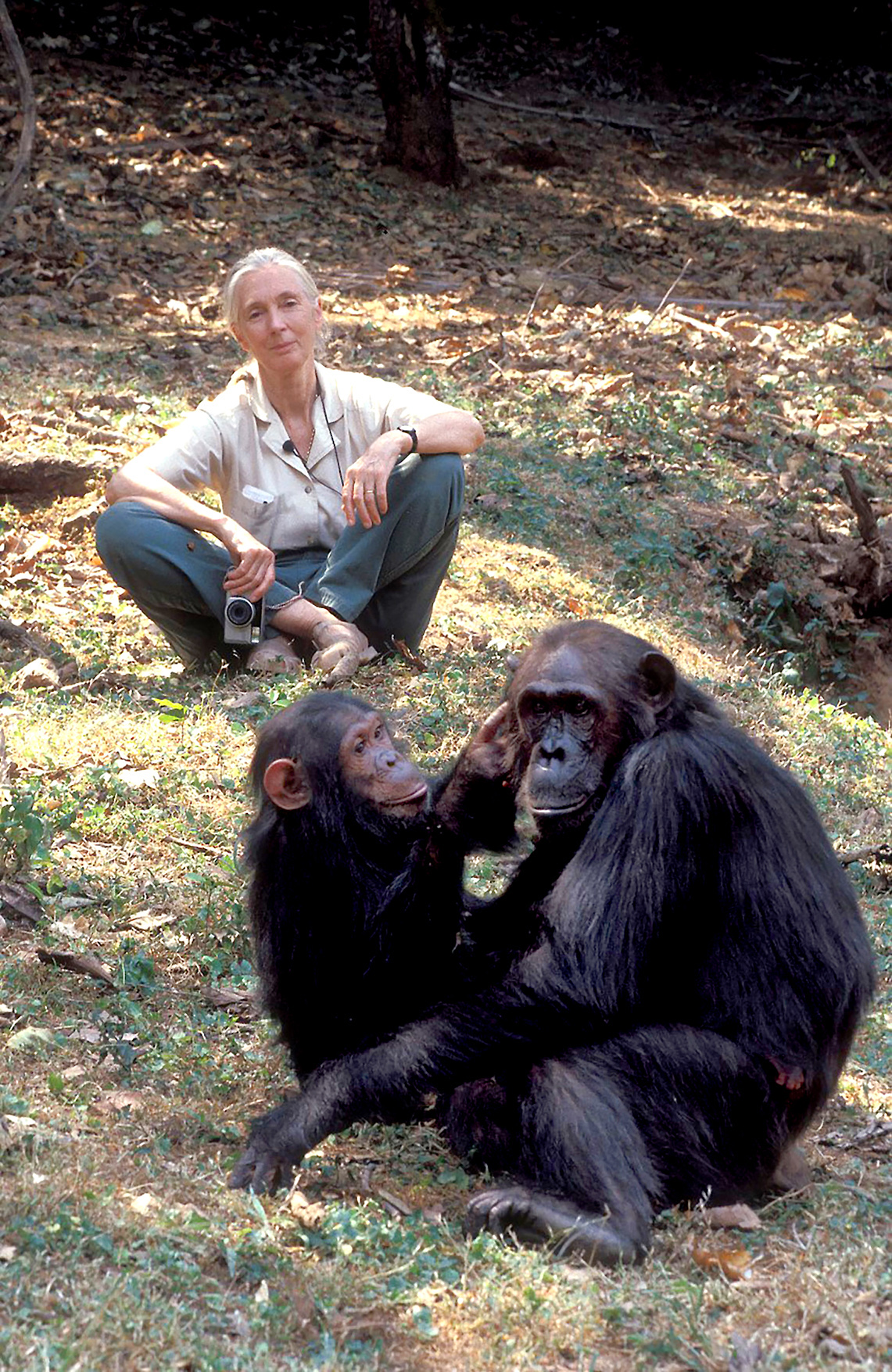
Jane Goodall watches young Gaia groom her mother Gremlin who cradles her newborn twins at Gombe National Park in Tanzania in 1998. (Photo: Kristin J Mosher)
What keeps her going
When asked what drives her to keep going, Goodall told Daily Maverick: “One, I’m an obstinate creature by nature, and I’m not going to give up.
“Two, I wouldn’t do it if it didn’t make a difference.”
She added that when she was at the JSE the night before giving a talk on sustainable finance, an older man came up to her and said that she had changed his life.
In many ways, Goodall made a great sacrifice once she learnt the true extent of deforestation, having to leave behind the forest she loved, to try to save habitats around the world.
But for her, “it’s just one of those things”. DM





















 Become an Insider
Become an Insider
Another example of what a ‘good egg’ Jane Goodall is, is the story of the Gary Larson (Far Side) cartoon, involving Goodall, which was catapulted to notoriety and was a ‘minor’ controversy in 1987, garnering a national response. The cartoon depicted a chimpanzee couple grooming each other, the female – finding a single blonde strand of hair on the male – probes, “Conducting a little more ‘research’ with that Jane Goodall 𝘵𝘳𝘢𝘮𝘱?”
Larson, however, had never meant for it to express any malice towards Goodall.
The response to his cartoon was immediate. Many ardent supporters of Goodall took offense to the cartoon, and it didn’t sit well with The Jane Goodall Institute either. Under the institute director’s order and unbeknownst to Goodall, they had their lawyers draft a letter to Larson and his syndicate in which they described the cartoon to be an “atrocity”.
Larson wrote: “I was horrified. Not so much from a fear of being sued… but because of my deep respect for Jane Goodall and her well-known contributions to primatology. The last thing in the world I would have intentionally done was offend Dr Goodall in any way.”
The plot twist here, however, is that Goodall enjoyed the cartoons and intervened when she learned that the institute had contacted Larson.
“I thought it was very funny. And I think if you make a Gary Larson cartoon, boy you’ve made it,” she said.
“spends 300 days of her year travelling around the world, speaking to people about…climate change”
Rules for thee but not for me?
With Africa’s population explosion you need to drink strong muti to be optimistic about the future of the wildlife and forests.
I sadly have to agree. It would be worth knowing how much the human population has increased in the communities that were brought on board. I love to ‘travel’ via Google Earth but was so dismayed to zoom in on areas of Kenya that were sparsely populated and ecologically diverse when I explored them on my motorcycle back in the 1970s … just shamba on top of shamba and small cities that at that time were just dorps.